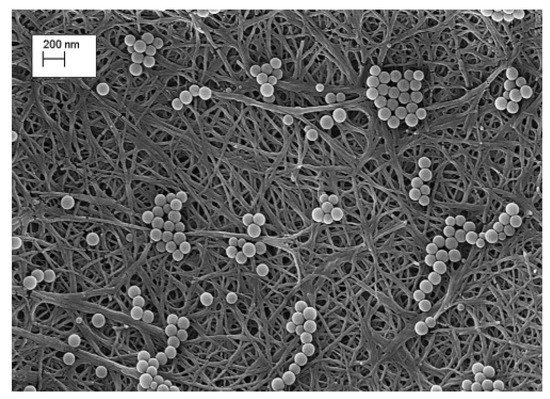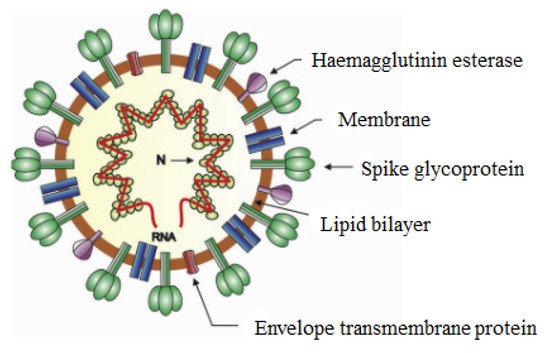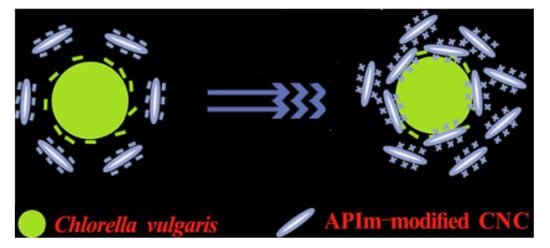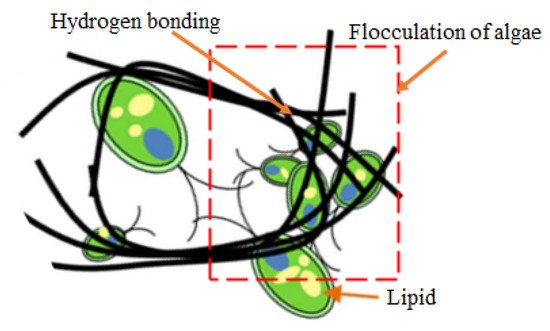
| Version | Summary | Created by | Modification | Content Size | Created at | Operation |
|---|---|---|---|---|---|---|
| 1 | Mohd Nor Faiz Norrrahim | + 3949 word(s) | 3949 | 2021-10-08 12:10:56 | | | |
| 2 | Catherine Yang | + 3941 word(s) | 3941 | 2021-10-08 12:34:26 | | |
Video Upload Options
Nanocellulose is among the emerging materials of this century and several studies have proven its use in filtering microbes. Its high specific surface area enables the adsorption of various microbial species, and its innate porosity can separate various molecules and retain microbial objects.
1. Introduction
Throughout the evolutionary process, among the significant issues faced by society today are the protection of natural resources and the implementation of eco-friendly approaches to sustaining a high quality of life. Environmental pollution is a worldwide concern and the majority of pollutants have long-term negative impacts on humans. Focusing on microbial pollution, the most common bulk transportation media for particulate contaminants are air and water. Microbes are microscopic living organisms that can be found everywhere, including in water, soil and air, but they are too small to be seen with the naked eye. These microbes are commonly viruses, bacteria, and fungi and may involve microscopic parasites. Certain microbes are harmful to our health, while others are beneficial. Table 1 shows several types of infectious diseases caused by microbes.
Table 1. Several infectious diseases caused by microbes.
| Infectious Disease | Microbe That Causes the Disease | Type of Microbe | Reference |
|---|---|---|---|
| Coronavirus (COVID-19) |
Severe acute respiratory syndrome coronavirus 2 (SARS-CoV-2) | Virus | [1] |
| Cold | Rhinovirus | Virus | [2] |
| Chickenpox | Varicella zoster | Virus | [3] |
| German measles | Rubella | Virus | [4] |
| Whooping cough | Bordatella pertussis | Bacteria | [5] |
| Bubonic plague | Yersinia pestis | Bacteria | [6] |
| TB (Tuberculosis) | Mycobacterium tuberculosis | Bacteria | [7] |
| Malaria | Plasmodium falciparum | Protozoa | [8] |
| Tinea barbae (dermatophyte infection) | Trichophyton rubrum | Fungus | [9] |
| Athletes’ foot | Trichophyton mentagrophytes | Fungus | [10] |
Microbes can also be transmitted through the air. According to the World Health Organization (WHO), airborne transmission differs from droplet transmission as it refers to the presence of microbes within droplet nuclei that are typically less than 5 μm in diameter and can circulate in the air for significant periods and be transmitted to others over distances more than 1 m [11]. Whereas droplet transmission occurs when a person is in close contact (within 1 m) with a symptomatic patient with respiratory symptoms such as coughing or sneezing and is thus at risk of exposure to potentially infective respiratory droplets (typically >5–10 μm in diameter). Nowadays, the threat of the newly discovered infectious coronavirus disease (COVID-19) is worrying, as this pandemic outbreak has already killed millions of people worldwide. The outbreak is exacerbated by the occurrence of frequent mutations, which makes it difficult to rapidly produce omnipotent vaccines [1]. Therefore, an effective, robust, and inexpensive air-borne virus removal membrane filter is an urgent need to provide a means to prevent virus spread in hospitals, transportation hubs, schools, and other venues with high social traffic turn-over in order to minimize the risks arising from the COVID-19 pandemic.
Microbe removal can be done through a variety of methods, such as, filtration (either depth filtration or surface screening), partitioning and fractionation (centrifugation), and chromatography (ion-exchange, affinity, gel permeation) [12]. Of these different techniques, filtration is a desirable choice, as it is non-destructive and non-interfering, implying that it will not threaten the quality of biological samples or induce immune reactions. Membrane filters have been made from a variety of synthetic and semi-synthetic polymers, designed to achieve a desired filtration pore size. The membrane filter is also an effective and widely used method for detecting microbiological pollution in collection samples. It requires less planning than certain other conventional methods and is one of the few methods that allows for microorganism separation and subsequent determination. Microbes cannot be retained by the normal membrane filter because the membrane pores are too large. Therefore, it is critical to have a more effective material for microbe filtration, and there are studies that have led to the discovery of new filtering media made from cellulose with efficient filtration capability. The ultimate objective would be to be able to effectively and securely filter microbes from the environment at an affordable cost.
2. Recent Developments on Nanocellulose as a Filtration Material against Microbes
2.1. Viruses


| Microbes | Type of Nanocellulose | Functionalization | Findings | Reference |
|---|---|---|---|---|
| A/swine/Sweden/9706/2010 (H1N2)—Swine influenza | BNC | Not applicable |
|
[12] |
| Xenotropic murine | BNC | Not applicable |
|
[18] |
| MS2 viruses | BNC | Not applicable |
|
[29] |
| ColiphagesΦX174 | BNC | Not applicable |
|
[29] |
| Parvoviruses | BNC | Not applicable |
|
[30] |
| EV71 | CNF | Polyglutamic acid and mesoporous silica nanoparticles |
|
[27] |
| Sindbis virus | CNC | Guanidine |
|
[23] |
| Porcine parvo virus | CNC | Guanidine |
|
[23] |
2.2. Bacteria
| Microbes | Type of Nanocellulose | Functionalization | Findings | Reference |
|---|---|---|---|---|
| Escherichia coli | CNC | Silver nanoparticles |
|
[36] |
| Bacillus subtilis and Escherichia coli | CNF | ZnO and CeO2 |
|
[37] |
| Escherichia coli | BNC | Not applicable |
|
[38] |
| Escherichia coli, Staphylococcus aureus | CNF | Activated carbon |
|
[39] |
| Escherichia coli | BNC | Silver nanoparticle |
|
[40] |
| Escherichia coli, Staphylococcus aureus, Pseudomonas aeruginosa | BNC | Silver nanoparticle |
|
[41] |
| Escherichia coli, Staphylococcus aureus | BNC | Silver nanoparticle |
|
[42] |
| Escherichia coli | CNF | Polyethersulfone (PES) membranes |
|
[43] |
2.3. Other Types of Microbes


References
- Norrrahim, M.N.F.; Norizan, M.N.; Jenol, M.A.; Farid, M.A.A.; Janudin, N.; Ujang, F.A.; Yasim-Anuar, T.A.T.; Najmuddin, S.U.F.S.; Ilyas, R.A. Emerging Development on Nanocellulose as Antimicrobial Material: An Overview. Mater. Adv. 2021, 2, 3538–3551.
- Atkinson, S.K.; Sadofsky, L.R.; Morice, A.H. How does rhinovirus cause the common cold cough? BMJ Open Respir. Res. 2016, 3, 1–11.
- Lamont, R.F.; Sobel, J.D.; Carrington, D.; Mazaki-Tovi, S.; Kusanovic, J.P.; Vaisbuch, E.; Romero, R. Varicella-zoster virus (chickenpox) infection in pregnancy. BJOG Int. J. Obstet. Gynaecol. 2011, 118, 1155–1162.
- Leung, A.K.; Hon, K.L.; Leong, K.F. Rubella (German measles) revisited. Hong Kong Med. J. 2019, 25, 134–141.
- Hegerle, N.; Guiso, N. Epidemiology of whooping cough & typing of Bordetella pertussis. Future Microbiol. 2013, 8, 1391–1403.
- Spyrou, M.A.; Tukhbatova, R.I.; Wang, C.C.; Valtueña, A.A.; Lankapalli, A.K.; Kondrashin, V.V.; Tsybin, V.A.; Khokhlov, A.; Kühnert, D.; Herbig, A.; et al. Analysis of 3800-year-old Yersinia pestis genomes suggests Bronze Age origin for bubonic plague. Nat. Commun. 2018, 9, 1–10.
- Gagneux, S. Ecology and evolution of Mycobacterium tuberculosis. Nat. Rev. Microbiol. 2018, 16, 202–213.
- Bhatt, S.; Weiss, D.J.; Cameron, E.; Bisanzio, D.; Mappin, B.; Dalrymple, U.; Battle, K.E.; Moyes, C.L.; Henry, A.; Eckhoff, P.A.; et al. The effect of malaria control on Plasmodium falciparum in Africa between 2000 and 2015. Nature 2015, 526, 207–211.
- Furlan, K.C.; Kakizaki, P.; Chartuni, J.C.N.; Valente, N.Y.S. Sycosiform tinea barbae caused by trichophyton rubrum and its association with autoinoculation. Bras. Dermatol. 2017, 92, 160–161.
- Makola, N.F.; Magongwa, N.M.; Matsaung, B.; Schellack, G.; Schellack, N. Managing athlete’s foot. S. Afr. Fam. Pract. 2018, 60, 37–41.
- World Health Organization. Modes of Transmission of Virus Causing COVID-19: Implications for IPC Precaution Recommendations. Available online: https://www.who.int/news-room/commentaries/detail/modes-of-transmission-of-virus-causing-covid-19-implications-for-ipc-precaution-recommendations (accessed on 20 September 2021).
- Metreveli, G.; Wågberg, L.; Emmoth, E.; Belák, S.; Strømme, M.; Mihranyan, A. A Size-Exclusion Nanocellulose Filter Paper for Virus Removal. Adv. Healthc. Mater. 2014, 3, 1546–1550.
- Lebrun, G.J.L. Cellulose-based virus-retentive filters: A review. Rev. Environ. Sci. Biotechnol. 2017, 16, 455–489.
- Burnouf, T.; Radosevich, M. Nanofiltration of plasma-derived biopharmaceutical products. Haemophilia 2003, 19, 24–37.
- Kalbfuss, B.; Wolff, M.; Morenweiser, R.; Reichl, U. Purification of cell culture-derived human influenza A virus by size-exclusion and anion-exchange chromatography. Biotechnol. Bioeng. 2007, 96, 932–944.
- Gustafsson, O.; Manukyan, L.; Mihranyan, A. High-Performance Virus Removal Filter Paper for Drinking Water Purification. Glob. Chall. 2018, 2, 31.
- Manukyan, L.; Li, P.; Gustafsson, S.; Mihranyan, A. Growth media filtration using nanocellulose-based virus removal filter for upstream biopharmaceutical processing. J. Membr. Sci. 2019, 572, 464–474.
- Asper, M.; Hanrieder, T.; Quellmalz, A.; Mihranyan, A. Removal of xenotropic murine leukemia virus by nanocellulose based filter paper. Biologicals 2015, 43, 452–456.
- Mautner, A.; Bismarck, A. Bacterial nanocellulose papers with high porosity for optimized permeance and rejection of nm-sized pollutants. Carbohydr. Polym. 2021, 251, 117130.
- Quellmalz, A.; Mihranyan, A. Citric Acid Cross-Linked Nanocellulose-Based Paper for Size-Exclusion Nanofiltration. ACS Biomater. Sci. Eng. 2015, 1, 271–276.
- Leung, W.W.F.; Sun, Q. Electrostatic charged nanofiber filter for filtering airborne novel coronavirus (COVID-19) and nano-aerosols. Sep. Purif. Technol. 2020, 250, 116886.
- Artika, I.M.; Dewantari, A.K.; Wiyatno, A. Molecular biology of coronaviruses: Current knowledge. Heliyon 2020, 6, e04743.
- Mi, X.; Albukhari, S.M.; Heldt, C.L.; Heiden, P.A. Virus and chlorine adsorption onto guanidine modified cellulose nanofibers using covalent and hydrogen bonding. Carbohydr. Res. 2020, 498, 108153.
- Meingast, C.; Heldt, C.L. Arginine-enveloped virus inactivation and potential mechanisms. Biotechnol. Prog. 2020, 30, 108–112.
- Rosilo, H.; McKee, J.R.; Kontturi, E.; Koho, T.; Hytönen, V.P.; Ikkala, O.; Kostiainen, M.A. Cationic polymer brush-modified cellulose nanocrystals for high-affinity virus binding. Nanoscale 2014, 6, 11871–11881.
- Rivière, G.N.; Korpi, A.; Sipponen, M.H.; Zou, T.; Kostiainen, M.A.; Österberg, M. Agglomeration of Viruses by Cationic Lignin Particles for Facilitated Water Purification. ACS Sustain. Chem. Eng. 2020, 8, 4167–4177.
- Sun, M.; Wang, H.; Li, X. Modification of cellulose microfibers by polyglutamic acid and mesoporous silica nanoparticles for Enterovirus 71 adsorption. Mater. Lett. 2020, 277, 128320.
- Sunasee, R.; Hemraz, U.D. Synthetic strategies for the fabrication of cationic surface-modified cellulose nanocrystals. Fibers 2018, 6, 15.
- Wu, L.; Manukyan, L.; Mantas, A.; Mihranyan, A. Nanocellulose-Based Nanoporous Filter Paper for Virus Removal Filtration of Human Intravenous Immunoglobulin. ACS Appl. Nano Mater. 2019, 2, 6352–6359.
- Gustafsson, S.; Lordat, P.; Hanrieder, T.; Asper, M.; Schaefer, O.; Mihranyan, A. Mille-feuille paper: A novel type of filter architecture for advanced virus separation applications. Mater. Horiz. 2016, 3, 320–327.
- Ma, H.; Burger, C.; Hsiao, B.S.; Chu, B. Ultra-fine cellulose nanofibers: New nano-scale materials for water purification. J. Mater. Chem. 2011, 21, 7507–7510.
- Wang, R.; Guan, S.; Sato, A.; Wang, X.; Wang, Z.; Yang, R.; Hsiao, B.S.; Chu, B. Nanofibrous microfiltration membranes capable of removing bacteria, viruses and heavy metal ions. J. Membr. Sci. 2013, 446, 376–382.
- Otoni, C.G.; Figueiredo, J.S.L.; Capeletti, L.B.; Cardoso, M.B.; Bernardes, J.S.; Loh, W. Tailoring the Antimicrobial Response of Cationic Nanocellulose-Based Foams through Cryo-Templating. ACS Appl. Bio Mater. 2019, 2, 1975–1986.
- Gouda, M.; Hebeish, A.A.; Al-Omair, M.A. Development of silver-containing nanocellulosics for effective water disinfection. Cellulose 2014, 21, 1965–1974.
- Ottenhall, A.; Henschen, J.; Illergård, J.; Ek, M. Cellulose-based water purification using paper filters modified with polyelectrolyte multilayers to remove bacteria from water through electrostatic interactions. Environ. Sci. Water Res. Technol. 2018, 4, 2070–2079.
- Suman; Kardam, A.; Gera, M.; Jain, V.K. A novel reusable nanocomposite for complete removal of dyes, heavy metals and microbial load from water based on nanocellulose and silver nano-embedded pebbles. Environ. Technol. 2014, 36, 706–714.
- Nath, B.K.; Chaliha, C.; Kalita, E.; Kalita, M.C. Synthesis and characterization of ZnO:CeO2:nanocellulose:PANI bionanocomposite. A bimodal agent for arsenic adsorption and antibacterial action. Carbohydr. Polym. 2016, 148, 397–405.
- Gustafsson, O.; Gustafsson, S.; Manukyan, L.; Mihranyan, A. Significance of Brownian motion for nanoparticle and virus capture in nanocellulose-based filter paper. Membranes 2018, 8, 90.
- Hassan, M.; Abou-Zeid, R.; Hassan, E.; Berglund, L.; Aitomäki, Y.; Oksman, K. Membranes Based on Cellulose Nanofibers and Activated Carbon for Removal of Escherichia coli Bacteria from Water. Polymers 2017, 9, 335.
- Zelal, I.; Ali, U.; Nadir, D. Filtration and Antibacterial Properties of Bacterial Cellulose Membranes for Textile Wastewater Treatment. AVvicenna J. Environ. Health Eng. 2018, 5, 106–114.
- Barud, H.S.; Regiani, T.; Marques, R.F.C.; Lustri, W.R.; Messaddeq, Y.; Ribeiro, S.J.L. Antimicrobial Bacterial Cellulose-Silver Nanoparticles Composite Membranes. J. Nanomater. 2011, 2011, 1–8.
- Zhang, X.; Fang, Y.; Chen, W. Preparation of Silver/Bacterial Cellulose Composite Membrane and Study on Its Antimicrobial Activity. Synth. React. Inorg. Met.-Org. Nano-Met. Chem. 2013, 43, 907–913.
- Aguilar-Sanchez, A.; Jalvo, B.; Mautner, A.; Nameer, S.; Pöhler, T.; Tammelin, T.; Mathew, A.P. Waterborne nanocellulose coatings for improving the antifouling and antibacterial properties of polyethersulfone membranes. J. Membr. Sci. 2020, 620, 118842.
- Sen, B.; Tahir, M.; Sonmez, F.; Turan Kocer, M.A.; Canpolat, O. Relationship of Algae to Water Pollution and Waste Water Treatment. In Water Treatment; IntechOpen: London, UK, 2013; pp. 335–354.
- Gopakumar, D.A.; Arumughan, V.; Pasquini, D.; Leu, S.Y.; Abdul Khalil, H.P.S.; Thomas, S. Nanocellulose-Based Membranes for Water Purification; Elsevier Inc.: Amsterdam, The Netherlands, 2018; ISBN 9780128139271.
- Kim, T.-I.; Park, H.; Han, M. Development of algae removal method based on positively charged bubbles. KSCE J. Civ. Eng. 2017, 21, 2567–2572.
- Ge, S.; Champagne, P.; Wang, H.; Jessop, P.G.; Cunningham, M.F. Microalgae Recovery from Water for Biofuel Production Using CO2-Switchable Crystalline Nanocellulose. Environ. Sci. Technol. 2016, 50, 7896–7903.
- Qiu, S.; Wang, L.; Champagne, P.; Cao, G.; Chen, Z.; Wang, S.; Ge, S. Effects of crystalline nanocellulose on wastewater-cultivated microalgal separation and biomass composition. Appl. Energy 2019, 239, 207–217.
- Yu, S., II; Min, S.K.; Shin, H.S. Nanocellulose size regulates microalgal flocculation and lipid metabolism. Sci. Rep. 2016, 6, 1–9.




